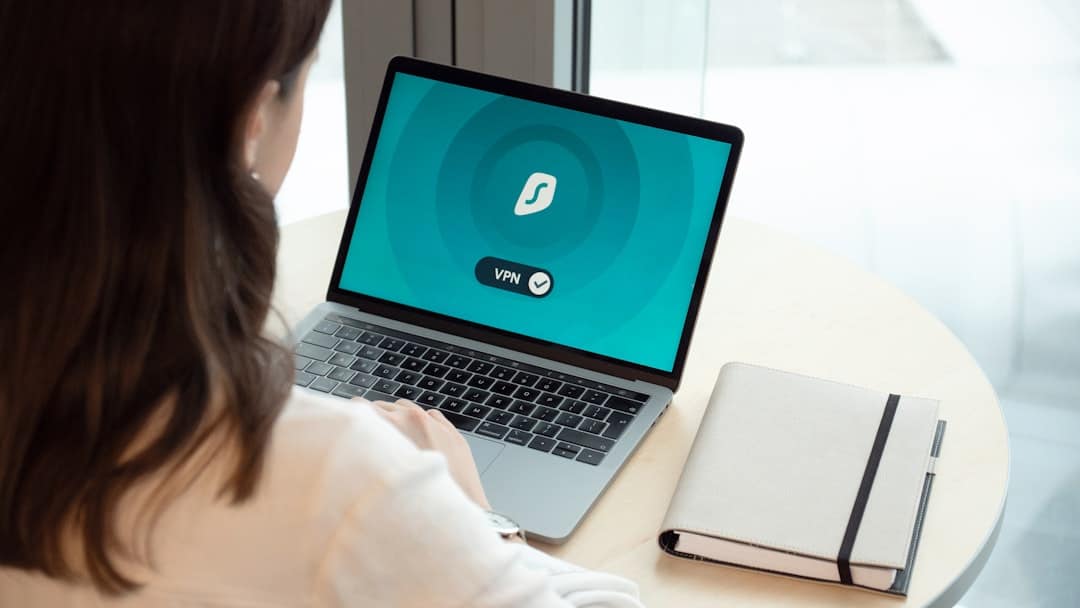The NIST Cybersecurity Framework (CSF) is a comprehensive set of guidelines and best practices developed by the National Institute of Standards and Technology to address the growing threat of cyber attacks. This framework provides organizations with a structured approach to managing and mitigating Cybersecurity risks. It establishes a common language for discussing cybersecurity issues and offers a baseline for evaluating and enhancing an organization’s cybersecurity posture.
The NIST CSF is built upon five core functions: Identify, Protect, Detect, Respond, and Recover. These functions represent the fundamental activities required for effective cybersecurity risk management. Each core function is further divided into categories and subcategories, which detail specific activities and outcomes necessary for implementing the framework.
By adopting the NIST CSF, organizations can gain a clearer understanding of their current cybersecurity status, identify areas for improvement, and develop a strategic plan to enhance their overall cybersecurity capabilities. The framework’s flexibility allows it to be adapted to various industries and organizational sizes, making it a valuable tool for businesses, government agencies, and non-profit organizations alike.
Key Takeaways
- The NIST Cybersecurity Framework provides a structured approach to managing cybersecurity risk.
- Implementing the NIST CSF in your organization involves identifying and prioritizing cybersecurity activities.
- Assessing cybersecurity risks and vulnerabilities is crucial for understanding the potential impact on your organization.
- Developing a cybersecurity response plan helps to effectively mitigate and recover from cybersecurity incidents.
- Monitoring and improving cybersecurity practices is essential for maintaining a strong security posture.
Implementing the NIST CSF in Your Organization
Assessing Your Current Cybersecurity Posture
Begin by evaluating your organization’s current cybersecurity stance through a comprehensive review of your existing cybersecurity policies, procedures, and controls. This assessment will help identify gaps or weaknesses that need to be addressed, providing a solid foundation for implementing the NIST CSF.
Aligning Your Cybersecurity Strategy with the NIST CSF
Next, align your cybersecurity strategy with the core functions of the NIST CSF, focusing on five key areas: identifying, protecting, detecting, responding to, and recovering from cybersecurity threats. This alignment will enable you to develop a roadmap for implementing the framework within your organization.
Implementation and Ongoing Improvement
To ensure a successful implementation, involve key stakeholders from across the organization to secure buy-in and support. This may involve establishing new policies and procedures, implementing new security controls, and providing training and awareness programs for employees. Finally, regularly review and update your cybersecurity program to ensure it remains aligned with the NIST CSF and continues to effectively manage cybersecurity risks.
Assessing Cybersecurity Risks and Vulnerabilities

Assessing cybersecurity risks and vulnerabilities is a critical component of the NIST CSF. This involves identifying and prioritizing potential threats to your organization’s information systems and data, as well as assessing the effectiveness of your current security controls in mitigating these risks. To assess cybersecurity risks, organizations can conduct risk assessments that identify potential threats, vulnerabilities, and impacts to their information systems.
This can help organizations prioritize their cybersecurity efforts and allocate resources effectively. In addition to assessing cybersecurity risks, organizations should also regularly assess their vulnerabilities. This involves identifying weaknesses in their information systems and security controls that could be exploited by cyber attackers.
Vulnerability assessments can help organizations identify and address potential security gaps before they are exploited by malicious actors. By regularly assessing cybersecurity risks and vulnerabilities, organizations can better understand their exposure to cyber threats and take proactive measures to mitigate these risks.
Developing a Cybersecurity Response Plan
| Metrics | Data |
|---|---|
| Number of identified cybersecurity threats | 25 |
| Response time to a cybersecurity incident | 2 hours |
| Number of employees trained in cybersecurity response | 50 |
| Effectiveness of response plan (scale of 1-10) | 8 |
Developing a cybersecurity response plan is essential for effectively managing cyber incidents and minimizing their impact on your organization. A cybersecurity response plan outlines the steps that should be taken in the event of a cyber incident, including who is responsible for responding to the incident, how communication will be managed, and what actions should be taken to contain and mitigate the incident. The NIST CSF provides guidance on developing a cybersecurity response plan as part of its “Respond” core function.
When developing a cybersecurity response plan, organizations should consider the specific threats they are likely to face and tailor their plan accordingly. This may involve conducting scenario-based exercises to test the effectiveness of the response plan and identify areas for improvement. It’s also important to regularly review and update the response plan to ensure that it remains effective in addressing evolving cyber threats.
By developing a comprehensive cybersecurity response plan, organizations can minimize the impact of cyber incidents and quickly recover from any disruptions to their operations.
Monitoring and Improving Cybersecurity Practices
Monitoring and improving cybersecurity practices is an ongoing process that is essential for maintaining an effective cybersecurity program. The NIST CSF emphasizes the importance of continuous monitoring and improvement as part of its “Protect” core function. This involves regularly monitoring your organization’s information systems and security controls to identify any potential security issues or weaknesses that need to be addressed.
To effectively monitor and improve cybersecurity practices, organizations can implement security controls that provide visibility into their information systems and help identify potential security issues. This may involve using security information and event management (SIEM) tools, intrusion detection systems, and other monitoring solutions to detect and respond to potential security incidents. In addition, organizations should regularly review their cybersecurity program to identify areas for improvement and implement changes as necessary.
By continuously monitoring and improving cybersecurity practices, organizations can better protect their information systems from cyber threats.
Integrating NIST CSF with Other Security Standards

Streamlining Compliance Efforts
By integrating the NIST CSF with these other standards, organizations can streamline their compliance efforts and ensure that they are effectively managing cybersecurity risks across all areas of their business.
Conducting a Thorough Review
To integrate the NIST CSF with other security standards, organizations should conduct a thorough review of their existing compliance requirements and identify areas of overlap with the NIST CSF. This can help organizations identify opportunities to align their cybersecurity efforts and avoid duplicative or conflicting requirements.
Creating a Cohesive Approach
By integrating the NIST CSF with other security standards, organizations can create a more cohesive and efficient approach to managing cybersecurity risks. This integrated approach can help organizations to better protect their sensitive data and systems, and to reduce the risk of cyber-attacks.
Benefits of Adopting NIST CSF for Cybersecurity
There are several benefits to adopting the NIST CSF for cybersecurity. First, the framework provides a common language for organizations to communicate about cybersecurity risks and priorities. This can help improve collaboration and information sharing across different parts of the organization, as well as with external partners and stakeholders.
Additionally, the NIST CSF provides a flexible and scalable approach to managing cybersecurity risks, allowing organizations to tailor their cybersecurity efforts to their specific needs and priorities. By adopting the NIST CSF, organizations can also benefit from improved visibility into their cybersecurity posture and more effective risk management. The framework provides a structured approach to assessing and improving cybersecurity practices, helping organizations identify potential security issues and prioritize their efforts accordingly.
Finally, adopting the NIST CSF can help organizations demonstrate their commitment to cybersecurity best practices and compliance with industry standards and regulatory requirements. This can help build trust with customers, partners, and regulators, as well as improve the organization’s overall reputation for security and reliability. In conclusion, the NIST Cybersecurity Framework provides a comprehensive set of guidelines and best practices for managing cybersecurity risks.
By understanding the framework, implementing it within your organization, assessing risks and vulnerabilities, developing a response plan, monitoring and improving practices, integrating it with other standards, and reaping its benefits, you can establish a strong foundation for effective cybersecurity management. Adopting the NIST CSF can help organizations improve their overall security posture, better protect their information systems from cyber threats, and demonstrate their commitment to best practices in cybersecurity.
If you’re interested in exploring the ethical considerations of the metaverse, you may want to check out the article “Challenges and Opportunities in the Metaverse: Ethical Considerations” on Metaversum.it. The National Institute of Standards and Technology (NIST) Cybersecurity Framework (CSF) can also be applied to the metaverse to ensure the security and privacy of users and their data. To learn more about NIST CSF, you can read the related article on Metaversum.it.
FAQs
What is NIST CSF?
NIST CSF stands for National Institute of Standards and Technology Cybersecurity Framework. It is a set of guidelines, best practices, and standards for improving cybersecurity risk management in organizations.
What is the purpose of NIST CSF?
The purpose of NIST CSF is to help organizations better understand, manage, and reduce their cybersecurity risks. It provides a common language for organizations to communicate about and manage cybersecurity risk in a cost-effective way.
How does NIST CSF work?
NIST CSF provides a framework that organizations can use to assess and improve their cybersecurity posture. It consists of five core functions: Identify, Protect, Detect, Respond, and Recover. These functions are further broken down into categories and subcategories that provide specific guidance for implementing cybersecurity best practices.
Who can use NIST CSF?
NIST CSF is designed to be used by a wide range of organizations, including government agencies, private sector companies, and non-profit organizations. It is applicable to organizations of all sizes and in all industries.
Is NIST CSF mandatory?
NIST CSF is not mandatory, but it is widely recognized and used as a best practice for cybersecurity risk management. Some government agencies and industry sectors may require or encourage the use of NIST CSF as part of their cybersecurity regulations or standards.
Is NIST CSF free to use?
Yes, NIST CSF is free to use and is publicly available on the NIST website. Organizations can use the framework to assess and improve their cybersecurity posture without having to pay for access to the guidelines and best practices.











Leave a Reply